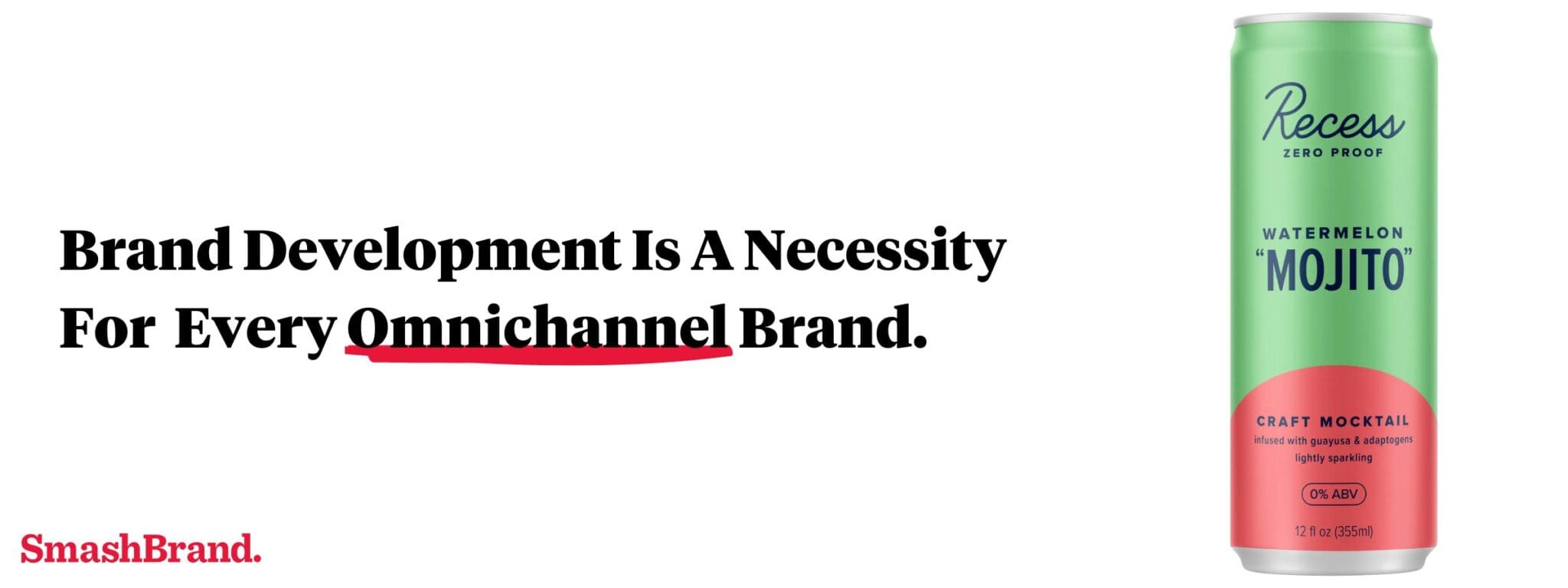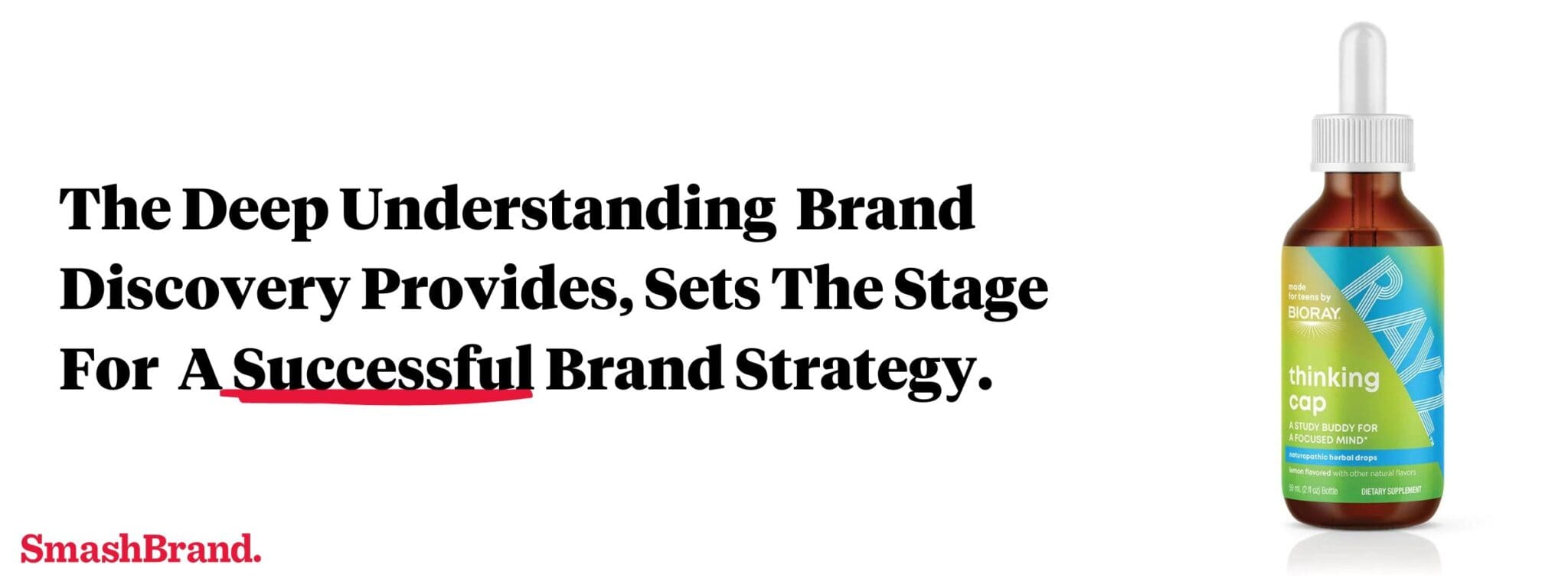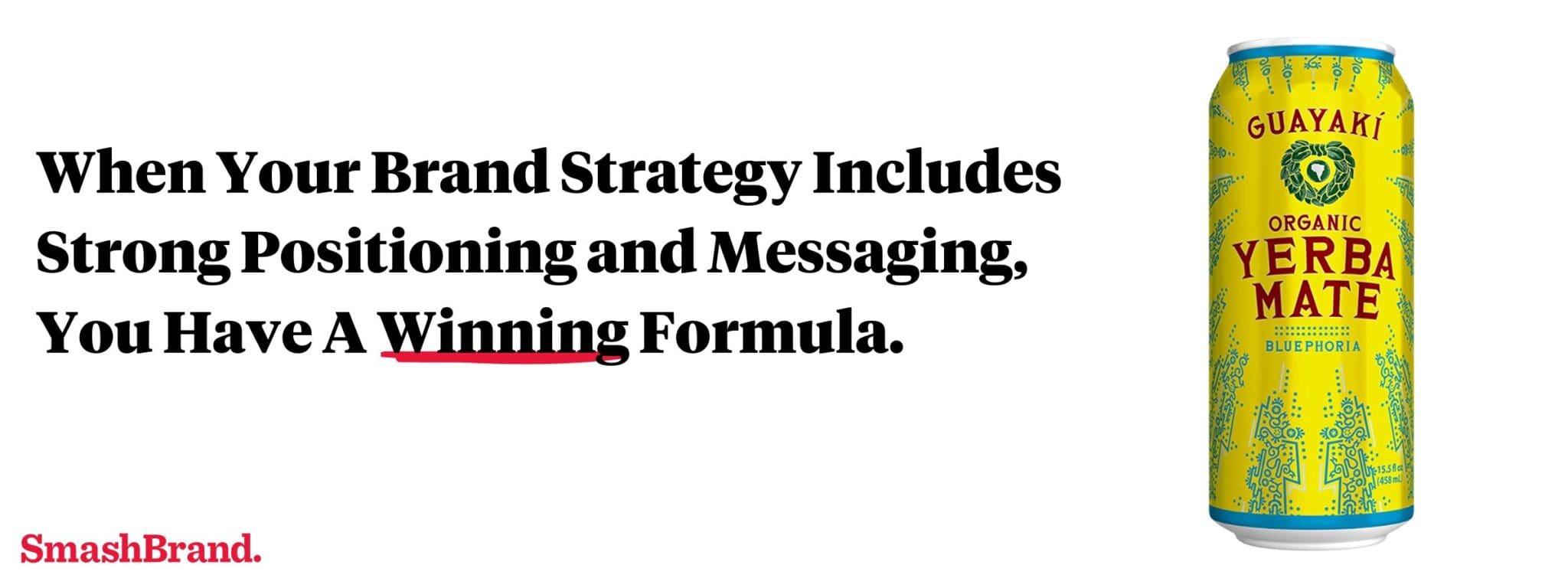Brand development is a mandatory component of every successful brand strategy. Unfortunately, few consumer goods companies understand the steps they must take to create a competitive edge in the marketplace.
An effective brand development strategy means faster marketplace penetration while creating a compounding effect in market share acquisition. This creates a more resilient position that is hard for consumers to infiltrate.
We’ve created this article for the brand management team that wants to leave no stone unturned in their brand or product development process. It is also for the founder or product development department that is unaware of a clear developmental path to success.
Here is what you can expect to learn
- Why brand development is necessary for FMCG and CPG companies.
- Other areas of branding and marketing that brand development directly impacts.
- Why it’s essential to begin with the discovery process.
- When and how to assess a brand’s current position and consumer understanding.
- What you need to consider when creating your brand development strategy.
- How to effectively innovate your branding and positioning for sustained growth.
- The what, how, and why of brand testing for consumer goods companies.
- The importance of iteration in an ongoing brand development process.
After completing this article, you will fully understand what you must accomplish throughout the brand development process to compete at the highest level.
Get your hands on the SmashReport!
And enter to win a FREE brand diagnosis worth $20,000.
*The SmashReport is a monthly newsletter for FMCG and CPG brands, helping them stand out in the competitive retail marketplace.
* indicates required
[smartcta id=”1″]
Why is brand development crucial for consumer goods?
In the crowded world of consumer goods, heightened consumer acceptance and low barriers to entry can make it easy for brands to gain initial traction. But, scaling beyond local, DTC or specialty channels often reveals strategy gaps. Brands face a brand perception reality check when moving into mainstream markets or partnering with national retailers.
A structured brand building and development process is essential for consumer goods brands that aim for brand growth rather than remaining small businesses. This process refines the brand voice, ensures alignment with the brand guidelines, and establishes a strong foundation for consistent messaging and positioning.
Additionally, brand equity improves with clear development strategies, as cohesive branding lowers marketing, sampling, and promotional costs. A well-executed brand extension can further capitalize on established trust, driving growth and expanding market reach.
For ambitious brands, focusing on brand development is not optional—it’s the key to scaling success and maintaining relevance in competitive markets.
The Complexity of Omnichannel.
Today’s omnichannel retail world requires more than a great product—it demands a well-crafted brand design and development strategy. As digital channels expand and retailers blend online and offline experiences, brand concept development has become essential for maintaining a cohesive presence and market relevance.

In this environment, brand development ensures your company stands out across every touchpoint. A clear brand architecture helps define your brand marketing strategy, guiding everything from digital engagement to physical store presence. A new brand entering the omnichannel space must carefully consider its brand building process to effectively connect with its potential customers.
Key strategies for omnichannel success.
- Leverage Inbound Marketing: An effective content marketing strategy drives engagement by providing valuable and relevant information to potential customers. The right brand content development ensures consistency across channels, reinforcing trust and loyalty.
- Place Branding for Visibility: Retail visibility matters. By integrating place branding into your strategy, you align your brand design development with physical and digital placements, enhancing awareness and reach.
- Collaborate with a Brand Building Company: Working with a brand building company helps refine your brand design and development for omnichannel success. From packaging to digital ads, every detail reinforces your positioning.
Consider a leading CPG company launching a new brand in both e-commerce and retail outlets. By aligning its brand concept development with its content marketing strategy, it delivers a seamless customer experience while building long-term loyalty.
How development impacts branding.
Implementing a successful brand development strategy is essential for aligning every aspect of your organization with your goals. Whether a small business or an established company, a well-crafted brand development playbook ensures consistency across all touchpoints, enhancing your overall impact.
Both new and existing businesses that invest in branding services benefit from building coherence in areas such as:
- Logo design
- Website design
- Packaging design
- Digital Marketing
- Content marketing
Collaborating with a brand-building company or agency for brand development helps refine your branding strategy and ensures your brand storytelling resonates with your audience. Every detail works cohesively to strengthen your brand identity, from your brand name to your marketing material.
A brand and product development plan aligns your messaging and visual identity, enabling seamless branding integration across channels. By partnering with a brand building agency, you can elevate your strategy and deliver a lasting impression to your customers.
Understanding the brand.
The first step in the brand development process is brand discovery. In this step, no final decisions are made, questions are asked, and materials are reviewed.
The brand discovery phase examines all online and offline documentation, including marketing materials, website information, customer feedback, and sales data. A deep understanding of the brand’s history creates a conversation about the company’s present-day brand image, voice, and positioning.
The next step in discovery is understanding what isn’t documented. We discover brand and consumer understandings through internal interviews with the founder or brand manager and external interviews with existing or prospective consumers. Throughout the interview process, we document learnings about the brand story and the differences in how the company and its consumers understand its brand personality.

After a comprehensive understanding of the company, we need an account of all available market research about the category, channels, and competitors.
Assessing the brand.
Brand assessment is the collection of discovery data that clarifies the current brand identity and positioning. The outcome of our discovery is a better understanding of the existing brand awareness level with the target audience.
Assessing a brand continues the learning process, giving us a better idea of customer loyalty, brand recognition, and category competitors. It helps us identify whether consumers understand and receive the company’s brand promise. Assessing these brand factors will be important as we move into the brand development strategy.
After completing the assessment, a company will better understand its brand value, positioning, brand loyalty, and whether these align or create friction with the target market.
Creating the strategy.
While “strategy” is a part of the entire development process, it is also a specific step in the brand development strategy. That might appear confusing at first glance, so let’s clarify what occurs during this step.
Here is where we start to decide who our ideal customer is, how we will address competitors, and how to create brand differentiation. You may also discuss other aspects of a CPG brand strategy, such as your channel strategy. For now, here’s a look at the most impactful aspects of the brand strategy.
Crafting an effective brand positioning strategy.
Finding a unique point of differentiation is the first step to creating your brand position. The second step is determining whether that position matters to consumers. So, in the brand strategy phase, you will narrow your position as tightly as possible before deciding how to get that position to consumers.
Brand positioning occurs by choosing the right value proposition and then doing everything you can to ensure your packaging and marketing resonate the message to your target audience. Whether your brand value means savings, solution, or status, the brand strategy phase is where you shout it to the mountaintops.
Designing impactful brand messaging.
You can shout what the consumer cares about and still not be heard. Distinction in brand messaging is a critical aspect of your brand strategy. Your target audience must agree with you and feel it. Messaging must reach deep into the consumer’s psyche, creating the need to act now while being remembered in the future.

Striving for innovation.
We’ve made decisions, and it’s time for strategy to meet testing. Many brands stop here, shifting to their go-to-market strategy. Unfortunately, stopping at this point might be effective for becoming a regional brand but not for being a national brand and developing a strong brand identity in the mass market. Brand innovation is when
Preparing for execution.
Now is the time to look at what you can expect from your brand and product performance. Brand execution is the phase where attention to detail matters—testing to determine how each minute change affects brand performance.
In the brand-building development process, execution means brand testing and product packaging design testing, and brand messaging with your target audience to determine the amount of purchase intent your brand receives against its competitors. Package design testing will determine the effectiveness of your final concepts, proving which is the clear winner.
Iterations To Your Brand Development Strategy
Nothing lasts forever; the same can be said for a brand strategy. However, if you’ve taken each of the previously discussed steps to develop your brand, your need for iterations will decrease significantly.
But at some point, whether the market changes or you need a brand pivot, your brand strategy must be iterated and optimized. Sometimes, this is a minor tweak, and other times, you need to begin the development process from the very beginning.
Data-Driven Brand Development For CPG Brands
Want a best-selling brand? SmashBrand is a brand development agency for FMCG and CPG brands that want to see a performance lift in retail. Our PathToPerformance™ process guarantees a brand performance lift on retail shelves.
From strategy to design, we take consumer brands through a successful brand development process, setting them up for long-term success. Book a time to discuss your project with our team.
Frequently asked questions.
Frequently Asked Questions
What is brand development?
Brand development is building and enhancing a brand’s identity, reputation, and recognition in the market. It involves creating a unique brand image, personality, and messaging that resonates with the target audience and differentiates the brand from its competitors. Brand development typically includes:
- Defining the brand’s values, mission, and vision.
- Developing a brand strategy that guides all aspects of brand communication, such as:
- Advertising.
- Packaging.
- Customer service.
Brand development aims to create a strong, positive, consistent brand experience that builds customer loyalty and drives business growth.
How much does brand development cost?
The cost of brand development varies widely depending on several factors. These factors include:
- The size and complexity of the brand and the scope of the project.
- The level of research and strategy involved, and the expertise.
- The experience of the branding agency or consultant.
Brand development can be a significant investment, but the return on investment (ROI) can be substantial if brand development is executed effectively and supported by brand activation.
Should we keep brand development in-house?
Some brands may handle aspects of brand development in-house, which can be more cost-effective but lacks a professional brand development agency’s valuable insights, perspectives, and expertise. Working with a branding agency or consultant who understands your brand’s needs and goals and can provide a customized solution that fits your budget and timeline is essential.
It’s also important to remember that brand development is an ongoing process that requires continued investment in research, strategy, and execution to maintain and grow the brand’s success.
What is a brand development index?
The Brand Development Index (BDI) measures a brand’s effectiveness among a particular customer segment relative to its overall effectiveness across all customers.
Example: Suppose a brand has a BDI of 120 in a specific customer group, showing that it performs 20% better in that group than on average across all customers. These findings suggest the brand has a powerful presence and a loyal following among that particular customer segment.
To calculate the Brand Development Index (BDI), you need to follow these steps:
- Determine the percentage of your brand’s total sales from a specific market or customer segment. We refer to this as market share.
- Determine the percentage of the total population or target audience within that specific market or customer segment. We refer to this as the category share.
- Divide the market share by the category share, then multiply the result by 100. Here, you get the BDI for that specific market or customer segment.
The formula for calculating the BDI is as follows:
BDI = (Market Share ÷ Category Share) × 100
For example, let’s say your brand has a market share of 20% in a specific region, and the category share for that region is 10%. The BDI for that region would be:
BDI = (20% ÷ 10%) × 100 = 200
These findings suggest that your brand is twice as successful in that region as in all areas. A BDI value of 100 shows the brand’s performance is on par with the average across all regions or categories.
Subscribe to
Nice Package.
A monthly newsletter that unpacks a critical topic in the FMCG & CPG industry.
Free Resource.

CPG product repositioning guide.
Explore the five undeniable signs your CPG product needs repositioning along with strategies for leveraging consumer insights for a guaranteed market lift.
Learn More About CPG product repositioning guide.